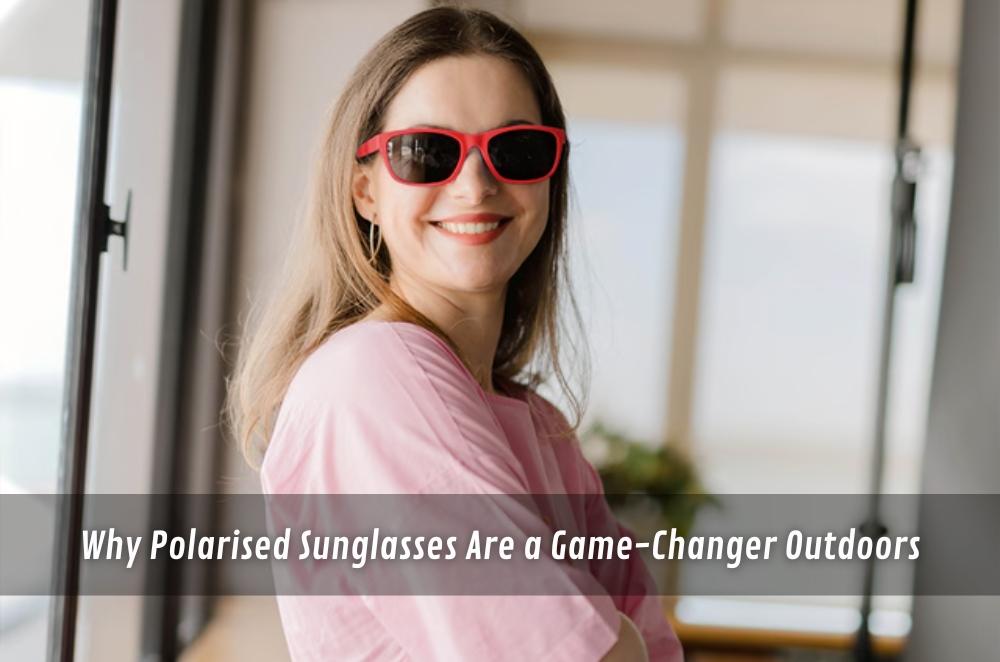Why Polarised Sunglasses Are a Game-Changer Outdoors

Glare is one of those things you don’t really notice until it ruins your day. You’re driving, or maybe sitting on the sand, and suddenly you’re squinting so hard your face aches. For a long time, I thought any pair of sunglasses would do the trick — until I started to understand the real benefits of polarised lenses. They don’t just dim the light; they strip away that harsh, bouncing glare so your eyes can finally relax.
I still remember standing on a jetty with a mate’s fishing rod. He handed me his polarised sunnies. At first, I thought, “What’s the fuss?” Then I looked down and saw the fish, plain as day, moving through the water. Without them, it was just a blinding reflection. That small moment changed the way I thought about sunglasses. They weren’t just a style choice — they were a game-changer for how I experienced the outdoors.
How polarised lenses shift your vision
Polarisation sounds technical, but it’s simple once you’ve seen it. Lenses are coated to block horizontal glare — the sort you get from water, metal, or hot roads. That’s why they cut through that harsh shine that makes your eyes ache.
-
Driving feels safer because the shimmer on the road disappears
-
Boating and fishing? You can actually see under the surface
-
Hikers say colours look sharper, like someone turned up the contrast
-
Even a backyard barbecue is easier without constant squinting
Truth is, they’re not perfect. Pilots sometimes avoid them because of instrument glare. Same with certain LCD screens. But for everyday people — beaches, roads, sports — they make the world softer, easier to look at.
Why eye protection matters here
In Australia, the sun is just… unforgiving. Even in winter, the UV index can be brutal. Spend enough time outside without protection and your eyes cop the damage. Cataracts, macular degeneration — the risks are very real. That’s why pages offering eye care advice in Australia put such a strong focus on proper sunglasses and hats.
A pair of shades that block UV rays and reduce glare isn’t about looking good; it’s about holding onto your eyesight down the track. That might sound dramatic, but anyone who’s spent an afternoon squinting in the bush knows it’s not a minor issue.
Picking frames and lenses that suit
Not all sunnies are equal. A slick pair might look good on Instagram, but comfort and function are what keep you wearing them. Things I’ve noticed matter:
-
Wrap-around shapes stop light sneaking in from the sides
-
Grey lenses feel natural, without messing with colour
-
Brown or amber can help on cloudy days, giving better contrast
-
A firm fit — not too tight, not slipping off your nose
If you’ve ever struggled to choose, a guide to choosing sunglasses can really help sort through the small details. And those details do matter once you’ve worn them for a while.
Keeping them in good nick
So looking after them makes sense. I’ve ruined more than one pair by being careless. A few things make a difference:
-
Always use a proper cloth, never a t-shirt corner
-
Keep them in a case — pockets scratch faster than you think
-
Rinse off grit before wiping, otherwise you’re just grinding dirt in
-
Avoid leaving them cooking on a dashboard (learned that one the hard way)
For people who wear glasses every day, choosing prescription polarised sunglasses can be the sweet spot. You get glare protection and vision correction rolled into one, without needing two pairs.
Everyday scenarios where polarisation shines
One of the best things about polarised sunglasses is how versatile they are. They aren’t just for sports or long road trips — they change small, everyday moments too.
Take morning walks, for instance. Without polarised lenses, wet grass can shimmer so brightly it almost hurts. With them, the detail comes back — you notice shades of green, shapes, and patterns that glare would normally wash out.
Cyclists often say they can read the road better. Potholes, patches of oil, or damp spots on the asphalt stand out sooner, which makes the ride safer. Even gardeners, who spend hours outside, talk about how much less fatigue they feel when they’re not battling reflection all afternoon.
It’s these simple shifts — the way you can move through your day without constant squinting — that make polarised lenses more like something you quietly rely on.
Sports and performance benefits
It’s not just everyday life where polarisation makes a difference. Athletes, in particular, notice how much it changes performance. Surfers, for example, often talk about how polarised lenses let them read the waves better before paddling out. Cyclists rely on them to spot changes in the road surface, which can be the difference between a smooth ride and a nasty spill.
Even runners benefit. Long-distance training under a blazing sun becomes easier when you’re not constantly squinting or straining your eyes. Cricketers and tennis players say polarised sunnies help them track a ball against a bright sky.
These might sound like small details, but in competitive sport, little differences matter. Comfort, clarity, and reduced eye fatigue all add up — and that can translate to better focus and better performance.
Final thoughts
Outdoor life here can be blinding — literally. From highways shimmering with heat to fishing trips ruined by glare, polarised sunglasses change the way you see things. They cut the strain, sharpen the view, and protect your eyes against the UV that never really lets up.
Once you’ve worn them in the right conditions, you notice the difference instantly. And once you’ve noticed, it’s hard to go back.








